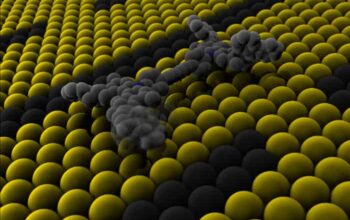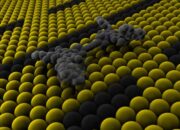As we delve into the burgeoning realm of quantum computing, a tantalizing question arises: Is spintronics absolutely necessary to unlock the full potential of this revolutionary technology? The confluence of quantum mechanics and classical electrodynamics gives rise to spintronics—a field that exploits not just the charge of electrons, but also their intrinsic spin properties. The implications are profound, transforming our approach to information processing, storage, and transmission. Yet, does spintronics hold the key to realizing the ambitious goals set forth by quantum computing, or is it merely one of many pathways to explore?
To articulate this discourse, it is essential first to establish a clear understanding of the foundational principles governing spintronics and quantum computing. Spintronics, derived from the term “spin transport electronics,” harnesses the spin states of electrons. As particles fundamental to electrical conduction, electrons possess a characteristic angular momentum—spin—often visualized as a tiny bar magnet. Unlike conventional electronics, which primarily leverages the flow of electric charge, spintronics offers the promise of enhanced functionality through the manipulation of spin states. This opens avenues for extreme miniaturization, high speed, and energy efficiency in various devices.
Quantum computing, on the other hand, operates on the principles of superposition and entanglement. Qubits—the basic units of quantum information—can exist simultaneously in multiple states, vastly expanding computational capabilities compared to classical bits. The interplay of qubit states, coupled with quantum gates, enables quantum computers to solve specific problems exponentially faster than their classical counterparts. It becomes apparent that both spintronics and quantum computing emerge from the same foundational principles of quantum mechanics, yet their trajectories diverge when addressing computational paradigms.
One must ponder the potential synergies between these two domains. Spintronic qubits, for instance, offer unique advantages. Utilizing spin states might afford the robustness necessary to counteract quantum decoherence, a primary challenge facing quantum systems. This decay of quantum coherence is deleterious to the integrity of quantum computations, and employing spintronic principles could enhance the coherence times of qubits. Moreover, manipulating spin through external magnetic fields or spin-orbit coupling can allow for faster and more efficient quantum gate operations, further fortifying the advantages of integrating spintronics with quantum computing frameworks.
The tactile allure of spin-based qubits, such as those proposed through the use of quantum dots or doped semiconductors, introduces another layer to the discussion. These qubits can potentially be easier to manufacture and integrate into existing semiconductor technology. Industry leaders have already begun to explore the notion of using spintronics as a bridging technology, minimizing the discontinuity between classical and quantum systems. However, caution must be exercised; while spintronics could enhance qubit performance, it does not singularly fulfill all the requirements for effective quantum computation.
In examining the landscape of quantum computing, we must also consider the potential for alternative qubit technologies. Topological qubits represent a formidable alternative, posited to provide intrinsic resistance to local perturbations through their topological nature. These qubits rely on exotic particles known as anyons and could lead to more stable and less error-prone quantum systems. The very existence of alternate qubits calls into question the centrality of spintronics—might we achieve robust quantum computations without ever needing to engage with spin-based systems?
Furthermore, as we navigate the challenges of quantum error correction, it becomes evident that spintronics may be more of a supplemental agent rather than a necessary component. Quantum error correction codes, such as surface codes, rely heavily on the redundancy of qubits to safeguard the fidelity of quantum information. Although spin-based systems can contribute to this realm, they are not the sole vehicle for advancing error correction protocols. In a landscape rich with potential avenues for addressing quantum noise, spintronics presents itself as one of many players in the quest for reliable quantum computing architectures.
Nevertheless, the interplay of spintronics and quantum computing should not be dismissed lightly. The directives of these fields converge significantly, particularly in the designs of quantum processors. By examining the kinetics of spin transport and coupling mechanisms at a microscopic scale, researchers may identify novel ways to fuse the strengths of both disciplines. As we venture deeper into the potential of hybrid systems, the pursuit of interdisciplinary collaboration becomes indispensable, merging insights from condensed matter physics, materials science, and quantum information theory.
In conclusion, while the question remains: Is spintronics integral to the future of quantum computing? The answer is not dichotomous. Spintronics enables intriguing possibilities that might complement and enhance quantum computing frameworks; however, it need not stand as the sole pathway to achieving quantum supremacy. As both fields are at the cusp of discovery, the drive towards innovative qubit technologies and error correction methodologies promises a diverse and vibrant ecosystem where spintronics could play a pivotal role, but it does not singularly dictate the future landscape of quantum computing. The challenge lies not only in extracting the potential from spintronics but in recognizing the multitude of pathways leading to the quantum future.










